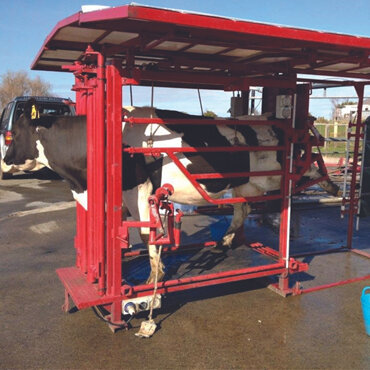Franklin Vets
Franklin Vets - excellence in veterinary care for dairy, farming, lifestyle, equine and household pets. BESTPRACTICE ACCREDITED NZ.
Your account is powered by Storbie. To edit your profile visit my.storbie.com
Your account is powered by Storbie. To edit your profile visit my.storbie.com

It dramatically reduces the cow’s ability to produce milk and renders her unable to keep up with the herd. It also causes weight loss and dramatically reduces the ability of the cow to get in-calf that season. Many herds I have analysed have a typical empty rate of 33% within the cows recorded as lame that season. Costs to treat lameness include the cost of injectables (if needed) and the labour which involves identifying, rounding up and manually treating each cow.
Ensuring the races are in good order and the herd is managed patiently are important factors. Your veterinarian can be a great resource should you be looking for additional input on lameness issues.
The goal of treatment should be to return the cow to its normal state of health as quickly as possible.
Our main treatment options involve hoof trimming, applying hoof blocks, administering pain relief (non-steroidal anti-inflammatories such as Ketomax) and administering antibiotics where necessary.
A study recently investigated different combinations of treatment in the UK to try to measure the best way to treat lame cows. It was done in the UK but the principles are similar in New Zealand.
It compared trimming (grp1) versus trimming + block (grp2) versus trimming +3 days pain relief(grp 3) versus trimming + block + 3 days pain reliief (grp 4).
The median lameness score at the start was 2. Cows were randomly assigned to a group. Successful treatment was measured as improvement to score 0 or 1 at day 35.
Group 1 (trim only) had a 69% success rate.
Group 2 (trim plus block) had a 72% success rate
Group 3 (trim plus 3 days pain relief) had a 76% success rate
Group 4 (trim plus block plus 3 days pain relief) had an 85 % success rate.
Following this trial, I have personally adopted the approach of trim plus block plus pain relief in the majority of lame cows I treat for our clients. In one of my large herds, I analysed three years of data during which I treated approximately 50 lame cows per year. The first two years treatment consisted of mostly trimming with a few blocks. The third year we adopted trimming plus a block plus pain relief. The empty rate of the lame cows averaged 33% in the first two years and dropped right down to 12% in year three with the changes! Although there may have been other variables involved, from my point of view this was a clear indication that a greater emphasis on lameness treatment helped the farmer’s bottom line.
Dr Graeme Charteris BVBSc
Franklin Vets - excellence in veterinary care for dairy, farming, lifestyle, equine and household pets. BESTPRACTICE ACCREDITED NZ.



